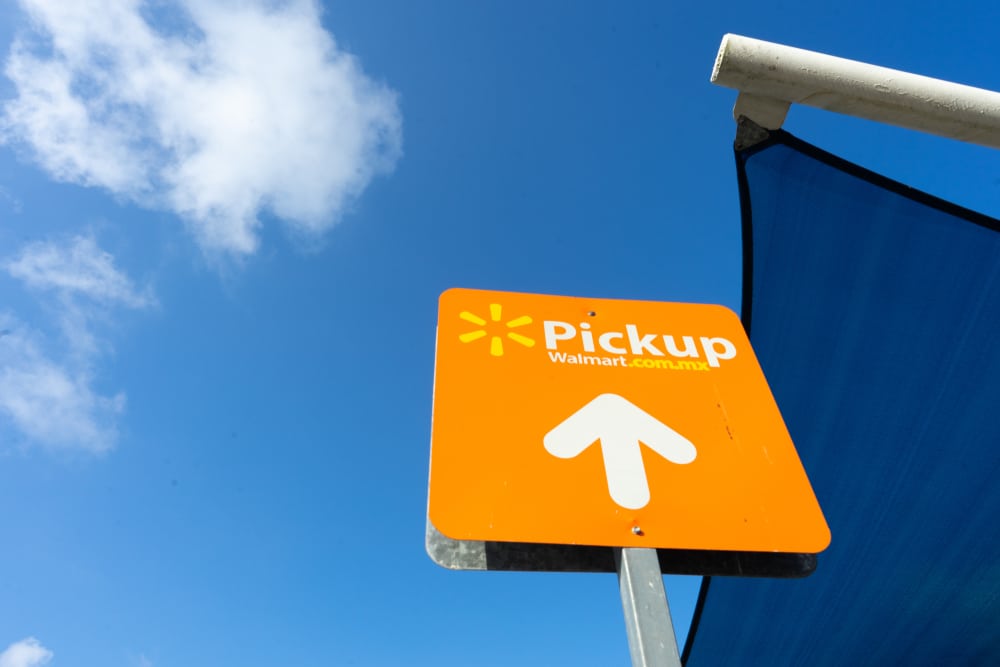According to Business Insider, over 68% of U.S. customers have made multiple “buy online pickup in store” purchases in the past year. To retailers who haven’t yet expanded into this omni-channel hybrid strategy, that number can be staggering.
Buy online pickup in store (also known as BOPIS and “click and collect”) is a relatively new form of retail that’s making major strides in the consumer goods market in 2019. Consumers love the speed, convenience, and affordability of BOPIS. Retailers love the cost efficiency of turning local stores into fulfillment centers. All in all, this strategy is the perfect blend of online and in-store shopping experiences—and, as of right now, it’s still faster than buying products from eCommerce giants.
The buy online pickup in store strategy is one of the biggest retail industry trends today, but it’s young enough that retailers are still ironing out the kinks in the system. From queue organization to fulfillment logistics to giving up floor space, the challenges presented by BOPIS are clear. But the benefits of optimizing the BOPIS retail experience far outweigh the challenges.
Why BOPIS Works for Consumers and Retailers Alike
From a consumer’s perspective, it’s easy to understand why a buy online pickup in store strategy works so well. Busy people want quick, easy, and convenient solutions to their daily problems. If you need a product now, you know you’ll have to go to a store—but BOPIS saves the huge time-sucking step of searching the aisles for what you need and waiting on long checkout lines. Bonus: you also save big on shipping costs. BOPIS is a creative way to attract customers by giving them exactly what they’re searching for.
BOPIS can save retailers from the costly pressure to offer free shipping to their customers.
The retailer’s perspective is more nuanced. When stores become fulfillment centers, the entire retail journey becomes more cost-effective for the retailer. Both the retailer and the customer save on last mile shipping costs. BOPIS can save retailers from the costly pressure to offer free shipping to their customers. And, even more importantly, BOPIS actually drives in-store sales. Eighty-five percent of shoppers make additional in-store purchases while picking up their online orders—which is the kingpin of the buy online pickup in store strategy. Research reports that, when operational costs are managed well, BOPIS can “improve a retailer’s market share and profits simultaneously.”
How to Optimize Your Buy Online Pickup In Store Strategy
As with any omni-channel retail strategy, there are challenges associated with BOPIS that retailers have to overcome in order to make these efforts profitable. The logistics of converting brick-and-mortar stores into fulfillment centers can be baffling on a national scale. Parking, floor space, staffing, and inventory management will all need to be managed well in order for BOPIS to succeed.
At the end of the day, 86% of surveyed retailers felt that BOPIS would soon be the default delivery method for their customers. Here’s how to optimize that experience for your clientele:
 Strategize your store layout. Don’t fall into the trap of thinking that customers should pick up their orders at the back of the store so they’ll impulse-buy everything in their path. Put your BOPIS station right upfront. Customers will make additional purchases regardless, and they’ll appreciate the added convenience—especially those using online grocery pickup to get routine items.
Strategize your store layout. Don’t fall into the trap of thinking that customers should pick up their orders at the back of the store so they’ll impulse-buy everything in their path. Put your BOPIS station right upfront. Customers will make additional purchases regardless, and they’ll appreciate the added convenience—especially those using online grocery pickup to get routine items.
- Increase your pickup speed. BOPIS only succeeds when pickup speeds are as fast as possible. Aim to notify shoppers that their purchases are ready in less than three hours for best results—and make sure those orders are actually ready when they arrive. Many stores still fail in this regard, and automation might help. Walmart saw a 60% speed improvement when adding automated elements to their BOPIS strategy.
- Utilize consumer data. If purchasing data ever mattered to the retail industry, it matters here. Studies show customers most often order toilet paper, vitamins, and laundry detergent for in-store pickup. But companies from Best Buy to Nordstrom to Home Depot also offer this service with fantastic results. Figure out what your customers are buying, and make those products that much easier to procure.
- Offer deals on future purchases. If you’re already using BOPIS and looking for a way to increase your participation numbers, try offering savings on future purchases. Forty-six percent of surveyed customers cited future deals as the most meaningful incentive that would entice them to use BOPIS more frequently. This addition to the buy online pickup in store strategy secures instant repeat business and pleases customers all in one go.
- Personalize the retail experience. Finally, in order to really take advantage of the BOPIS profit potential, you need to make entering the store a tempting experience for shoppers. They’re running in for convenience’s sake. If you manage to create a truly personalized shopping experience—perhaps through a shopping app like Shopkick—you may be able to increase the number of buyers who tack on additional items every time they pick something up from your store. Shopkick gamifies the shopping experience by encouraging customers to participate in a scavenger hunt for participating products via their mobile phone. As Shopkickers seek products in the aisle, they receive rewards points (aka “kicks). And if they decide to purchase that product, they receive even more kicks. This engaging, personalized retail experience encourages customers to look for products that they may not have known about previously.
Using New Retail Experiences to Gain a Strategic Advantage
Brick-and-mortar stores are faced with the challenge of creativity in today’s retail market. eCommerce giants make online shopping fast, easy, and incredibly cheap—but they still lack certain elements that make the in-person shopping experience unique. Implementing a buy online pickup in store strategy can help your store straddle that line between convenience and compatibility for today’s time-conscious customer. Further optimizing a BOPIS system with personalized marketing can secure repeat business from your most valuable customers and give you an added strategic advantage in the marketplace overall.
Improving the retail customer experience is always a welcome challenge at Shopkick. Our partners use our innovative shopping app to increase traffic, improve brand affinity, and engage repeat customers in new and exciting ways. Contact us to learn more about how Shopkick is the perfect complement to a buy online pickup in store strategy.
Image courtesy of Playa del Carmen





